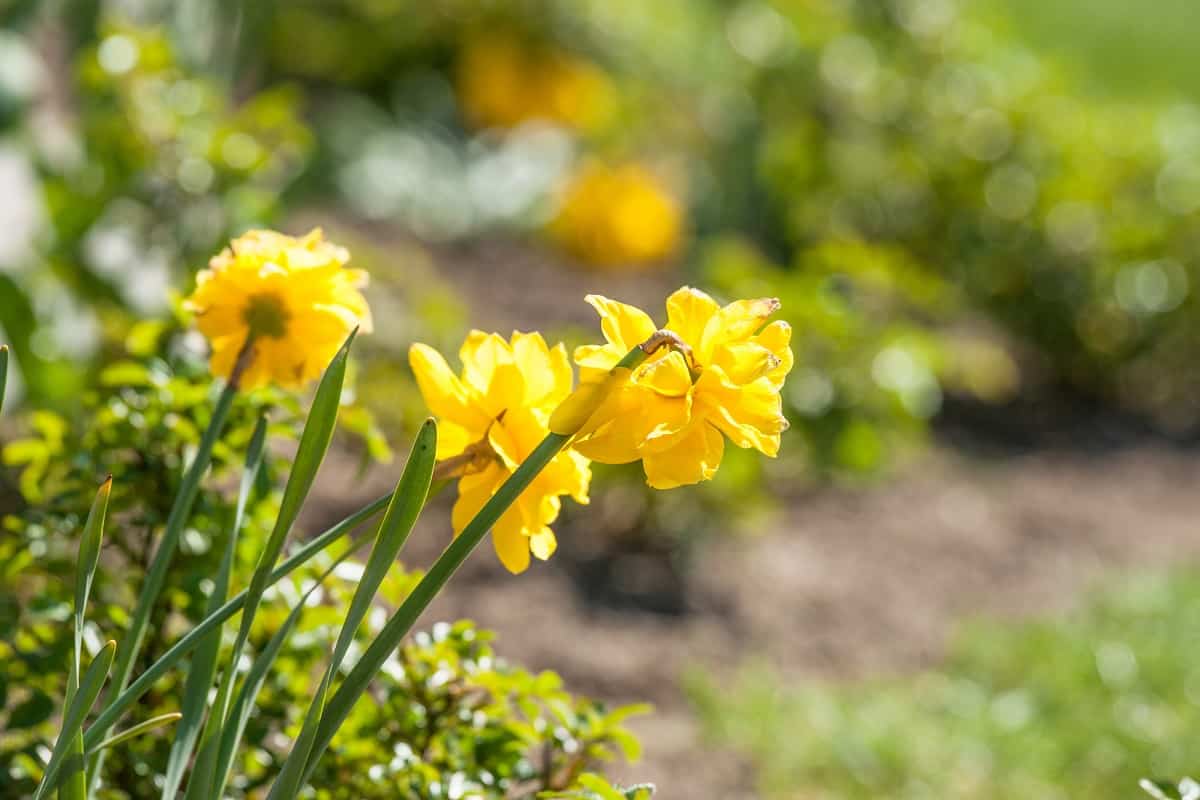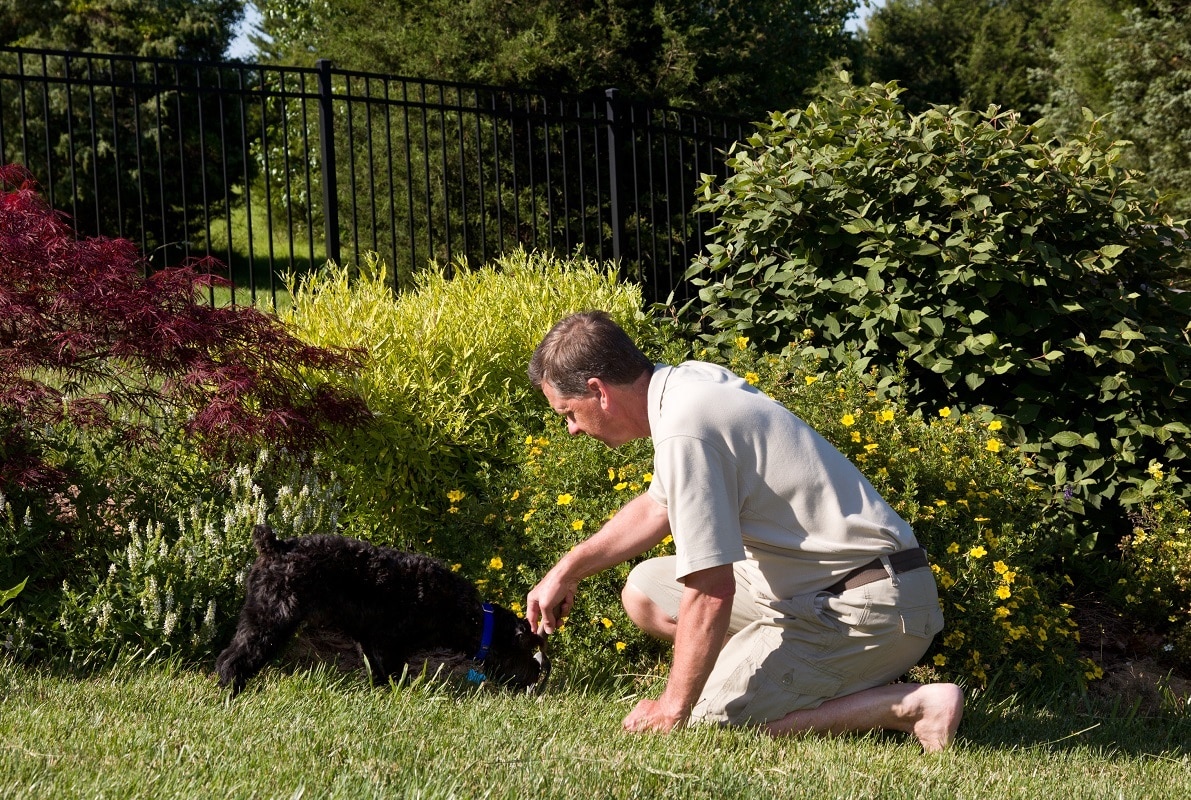While taking man’s best friend for a cool afternoon walk, there are many things to keep in mind including what harmful plants for dogs you may run into. Dogs and puppies all communicate with their mouth and they tend to be very curious as they bite and lick just about anything. However, what seems like a harmless chew on a plant can turn out to be a very dangerous encounter.
Simply put, dangerous doesn’t fully describe just how terrifying this ordeal can be. What’s even scarier is not knowing which plant is safe and which is poisonous. When properly educated, walking puppies and dogs can be quite an enjoyable treat for everyone. Knowing the harmful plants for dogs ensures that everyone knows which plant they can bring into their homes or which to look out for during a walk if you’re dealing with a healthy grazer.
However, it should be noted that the ASPCA has stated that when dogs consume plants they are more susceptible to undergo periods of gastrointestinal upsets and vomiting. So, before bringing plants into the yard or while on a walk, be sure to keep a keen eye out. Read on as Latchkey Pets dives into the top 10 harmful plants for dogs.
10 Harmful Plants for Dogs
Azalea
While azaleas are beautiful, they are also the first on our list of harmful plants for dogs. If just a couple leaves are ingested, your pups and adult dogs could suffer. Azalea is known for causing mouth irritation in dogs followed by diarrhea and vomiting. In some of the more severe cases, azalea has been known to decrease the blood pressure, put them in a comatose state, or even cause them to pass away.
Daffodil
Unlike many other yellow flowers, daffodils are quite noticeable and eye-catching. While every part of a daffodil plant is poisonous, the bulb is considered the most poisonous part for all canines. If puppies or older dogs eat any part of a daffodil, they will begin to experience a number of symptoms. These include a pressure drop, diarrhea, abdominal pain, convulsions, and vomiting.
In addition, flower bulbs that are planted underground are all considered poisonous to our furry friends. So, if bulb flowers pique your interest, it’s best to stick to flower cuttings instead of an entire plant.

Tulips
With their wide array of colors, tulips are also a part of our list of harmful plants for dogs since they have a bulb. As mentioned before, all bulb plants are very dangerous and more poisonous to dogs. If ingested while out on a trail, owners and dog walkers alike can expect to see oral irritation, signs of nausea, and a high degree of drooling.
Sago Palm
Just like with other plants, sago palm also falls into the category of being extremely toxic. When dogs ingest sago palm, they begin to experience bloody diarrhea and vomiting along with liver failure, bleeding disorders, and even death. These small palms are usually commonly kept as an indoor plant. This makes it easier for them to be more curious and chew, so remember to remove them if they’re already indoors.
Oleander
Oleander falls into the flowering shrub category of flowering plants. This plant is usually found in California and within the Southern States. The fruit and flower pigments experience what is known as cardiac glycosides which makes it very toxic to puppies and adult dogs. The pigment is known for causing muscle tremors, abnormalities, bloody diarrhea, vomiting, and incoordination.

Mums
Mums fall into the chrysanthemum family. Plants in the chrysanthemum family are all harmful plants for dogs. The plant mums contain a series of compounds that are very dangerous and irritating to our furry friends. When ingested it brings about diarrhea, vomiting, incoordination, and drooling.
Peonies
Peonies are known for their beauty as a shrub and they’re widely planted in backyards and gardens as one of the hardier outdoor plants. If dogs nip and ingest peonies, they will experience a decrease in their energy levels, diarrhea, and vomiting.
Black Walnut
Just like any other fruit, these nuts often fall from the parent trees and begin to mold and decay over time. The appearance of this looks quite fascinating and eye-catching to dogs. When ingested, they make dogs big and small very sick. Moldy black walnuts are known for causing seizures and a severely upset stomach.

Irises
A favorite plant of many, but a part of the group of harmful plants for dogs. If dogs get to chomp on irises, they can drool, vomit or salivate heavily. In addition, irises have also been known to cause a loss in energy, and diarrhea. This tends to occur because iris has several active components that are very toxic for puppies and older canines. Irises can also cause a pretty severe skin irritation.
Foxglove
Foxgloves are among the most beautiful tall flowering plants that you ever did see. They are loved by bees and other pollinators. While they serve their own purpose, they are quite harmful to our dogs.
Foxgloves are very toxic and every part of their being is toxic for dogs. The seeds, the flowers, and the leaves are all equally toxic in their own way. If ever an evening walk leads to a foxglove patch, be sure to keep an eye out because they are known for causing cardiac arrest and even death.
Final Thoughts on Harmful Plants for Dogs
Dogs explore almost everything that they see with their mouths. They greet us with tender licks, soft nips, and the happiest tail that anyone ever did see. When accompanying dogs for a calm stroll, be sure to look out for the top 10 harmful plants for dogs mentioned above. These pants are known for causing a number of problems for canines.
When ingested, these plants are known for causing cardiac arrest, excessive salivation, vomiting, diarrhea, and other symptoms. Some indoor plants are also harmful to dogs and should never be kept in the same space as them. However, if they are planted in personal gardens, it might be a good idea to remove them along with all bulb plants from the area.
Dogs depend on the kindness and alertness of those in their company to ensure their safety, happiness, and good health. So when taking a dog or puppy out for a walk, keep a keen eye out for any or all of the plants listed above. Contact Latchkey Pets for questions and advice concerning your four-legged best friends.
